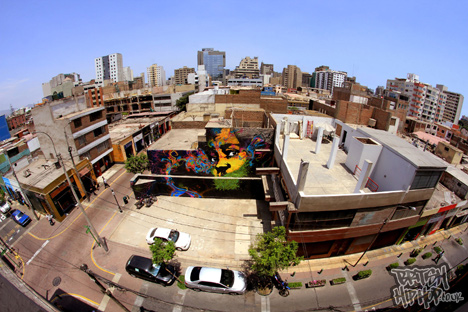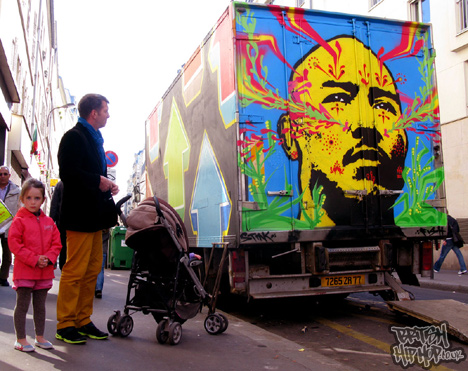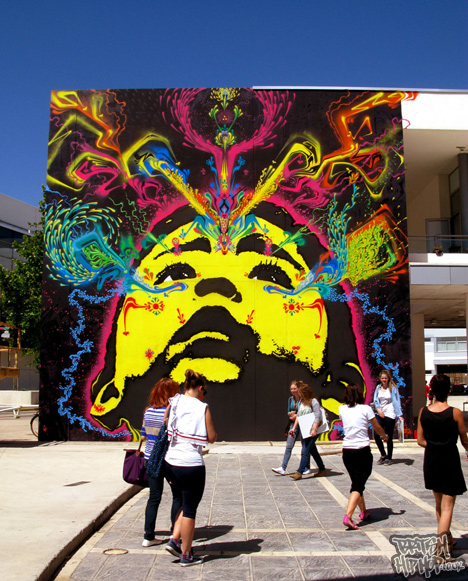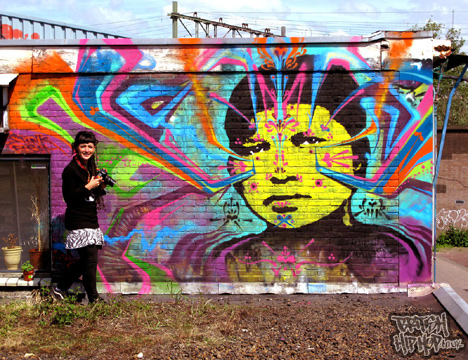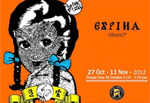Stinkfish is a Mexican born, Columbia based street artist whose exhibition in England recently came to a close. The exhibition, Espina (Spanish for ‘Thorn') was a combination of photographic portraits, found materials and graffiti styled stencilling which made striking colour contrasts and drew you into the world that these people and objects had come from.
Walking around left at least a partial impression of looking over somebody's history, on the walls hung National Geographics, old album sleeves, embellished with thorns where ever there were faces. The exhibition was hosted by the High Roller Society, a small, friendly space about fifteen minutes walk from Mile End tube station.
Perhaps you could talk a little about your history and explain why and how you first started to pursue street art.
Stinkfish: I was born in Mexico but lived in the capital of Colombia, Bogotá from my childhood. I started painting on the street 10 years ago with some friends, we liked the street and we wanted to put our images there. Gradually I did this more; today it is my life completely. [And] I always liked the street, so there was something logical about painting in it. I met the right people. All my work is focused on the street, not only painting, I also research it, study it.
Could you talk about your creative process as regards the pieces in this exhibition?
Stinkfish: I work from portraits I painted in the street in different moments and countries. A large part of my work is based on photos I take here in my city, Bogotá, or during travels that I do. I like to put travel portraits that I do from one city to another, from one country to another. In the exhibition are portraits of people from the Netherlands, Colombia, Perú, England Spain.
Why did you choose thorns for your theme?
Stinkfish: Thorns are mechanisms of defence for some plants. Humans create defence mechanisms similar to the thorns, they are not visible but they are there. I have always related my style in the street with shapes similar to the thorns.
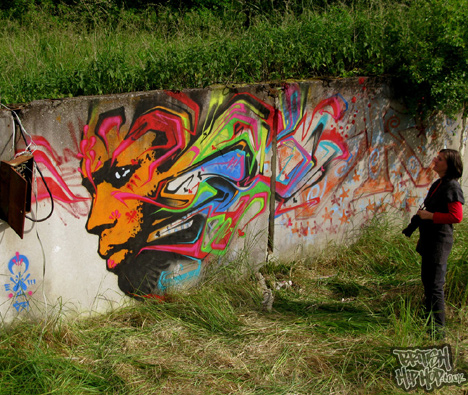
Your work seems quite focused on celebrating the faceless, the nameless and the anonymous. Was that something you wanted to get across? Why?
Stinkfish: I like to portray real people, those you meet on the street, in every corner, on the bus. We live in a world full of false stories, banal prefab faces and aesthetic, but far from that there is real life day to day, that is the intention in my work.
How did the found pieces become something you were interested in?
Stinkfish: I'm particularly interested in textures, accidents, forms and especially a halo of past stories.
I noticed particularly where you'd added thorns to magazines like the National Geographic and album covers. Where did this idea come from? What was the appeal of using album covers and old magazines?
Stinkfish: Outside of the street I like to find portraits that already exist [and] draw on them, it's a way to find new ways, draw and reinterpret portraits that already exist. I like magazines and old records covers, the ones that have a history, which have passed through several hands. I usually buy them on the street or small stores where they sell magazines and old records.
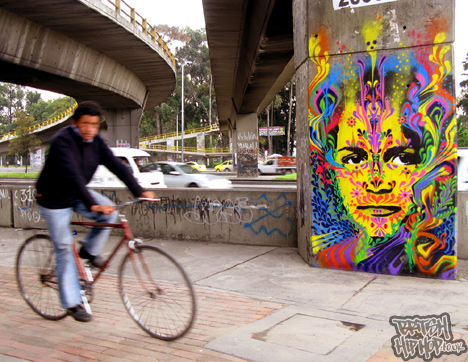
There's a sense, looking around this art work, that you're entering a story half way through because of some of the things you've used, like found photographs, and some of the things you used to paint on, like the medicine cabinet. I wonder if this sense of history beyond just your direct contributions as the artist was something you thought a lot about or something you were deliberate about?
Stinkfish: It happens something similar to with the magazines and records, off street I like to paint on surfaces that have a history, it is a direct influence from the street. The walls that I like to paint are the old ones, with cracks, plants, painting traces. For this exhibition, I worked with materials found in the street, especially wood and metal.
Do you have a favourite piece from the collection and why?
Stinkfish: I like the face in plaster painted with black ink, I have rarely been able to paint a face in 3D, I like how it works.
Did you help arrange the art at the gallery?
Stinkfish: Yes, [I was in charge of the] entire assembly of the exhibition. I think the space arrangement of the pieces and the little details are essential.
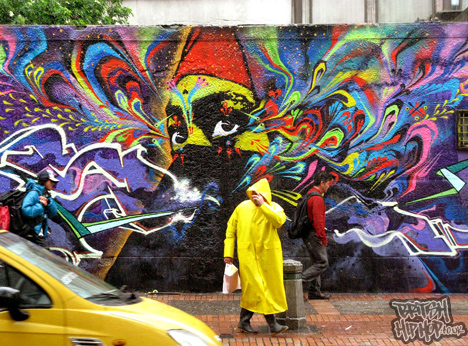
How did you find England, have you checked out any of the street art here and did you get the opportunity to explore and do any yourself?
Stinkfish: I travelled to England for the first time over a year ago and since then it has become a key city for my work on the street. I can paint walls that leave me very satisfied, and at the same time I have managed to make good friends and work on interesting projects.
Is street art as an act of subversion and rebellion important to you?
Stinkfish: Graffiti and urban art are the expressions of resistance and criticism more powerful in the modern city. For me work on the street is a way to destroy stereotypes and prefabricated lifestyles. I believe in winning individual battles to achieve collective victories.
What's the difference between creating street art for yourself and making a living from it?
Stinkfish: From the beginning I decided to take my work on the street as a profession, night and day, I never thought about doing it as a hobby, this is my job, a real job that has no relation with money, the relation is with what I like, what I care [about].
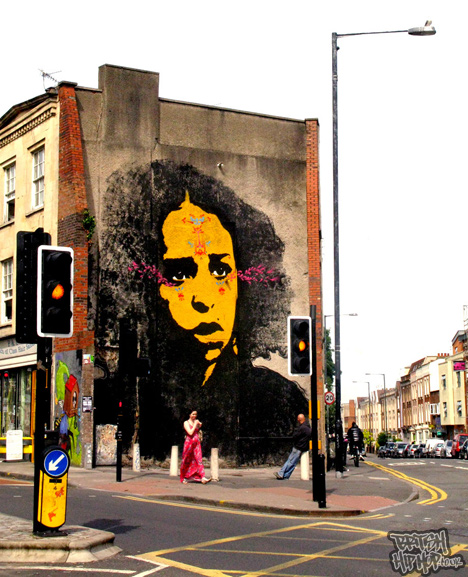
What are the biggest challenges you've faced as an artist?
Stinkfish: I don't consider myself an artist, I do graffiti. The biggest challenge is to assume a life that has nothing safe, you never know that it will happen.
Why 'Stinkfish'?
Stinkfish: It is not a great story, it's my name for more than 15 years. Simply I liked the meaning and combination of words.
What achievements are you most proud of and what do you perhaps regret in hindsight, either for not doing or maybe just not doing something as well as you think you could have?
Stinkfish: It has been a time of big and small achievements, I do not regret anything. I think the most important thing has been to achieve devoting myself full-time to graffiti, meet incredible people and understand a little bit [about] how this world works in the streets where people live every day.
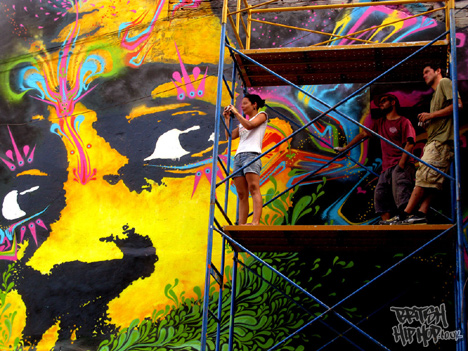
Graffiti is one of the four elements of hip hop. Does music (be it hip hop or anything else) inspire your work, is it a big part of your life? If so, what sort of music are you listening to, what's the attraction for you?
Stinkfish: It is a big influence, I hear mostly punk and ska from my youth, also Hip Hop and popular music. I'm interested above all in music that talks about the daily life, the real problems.
By: Andy Fletcher
